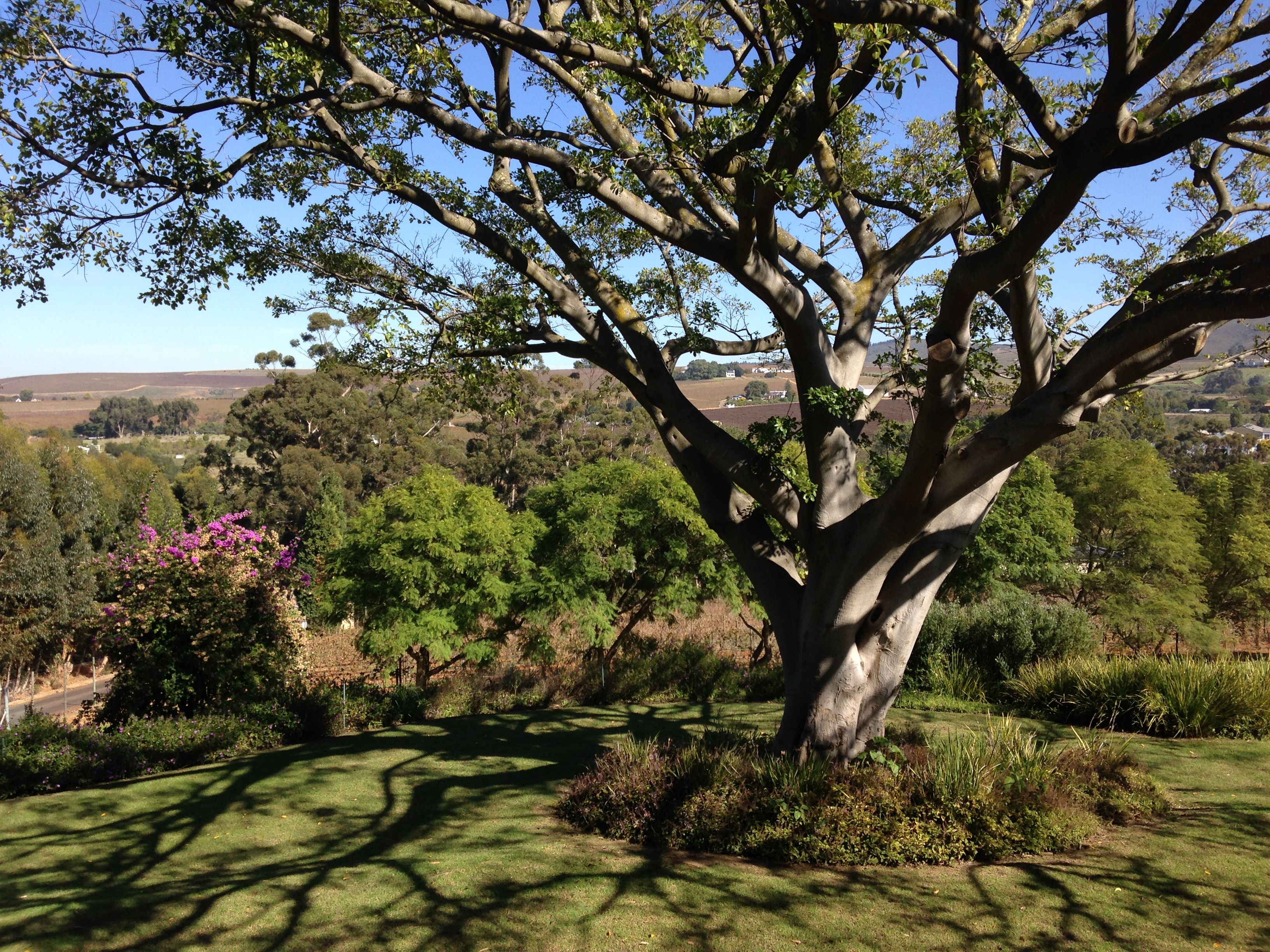Some of the most recognizable images of Namibia are those of the graceful red sand dunes at Sossusvlei, and our trip to see them was one of the highlights of our tour of Southern Namibia.
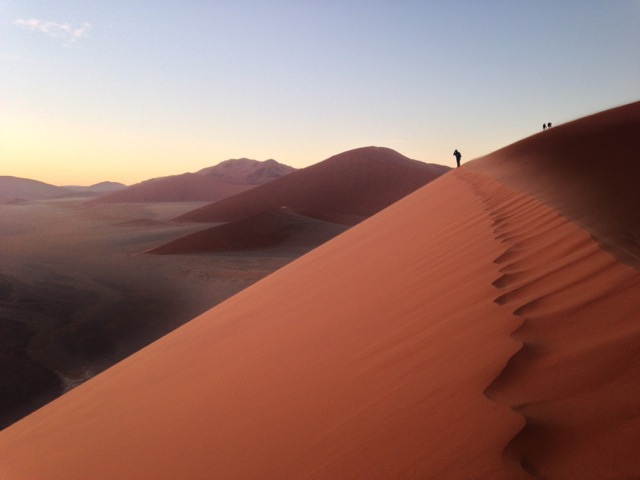
Before we even began talking about planning a trip to Africa, I had been pinning images of the abandoned, sand-filled buildings in the diamond-mining ghost town of Kolmanskop to my “Wanderlust” board on Pinterest.
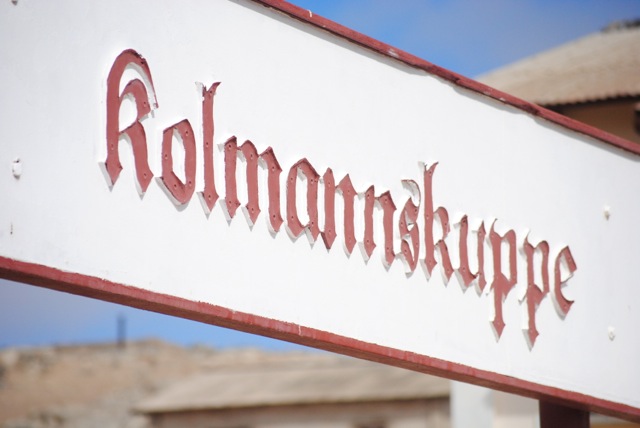
On the third day of our camping trip, we arrived at one of the highlights of Namibia: the Fish River Canyon. The Fish River Canyon, which is 160km long and up to 27km wide with a depth of 550m, is the second-largest canyon in the world (after the Grand Canyon).
The Fish River Canyon is one of things that I was most excited to see in Namibia, and it didn’t disappoint. The gaping mouth of the canyon, with its striations and jagged edges, was awe-inspiring. Because a picture is worth a thousand words, we’ve included plenty of pictures of the canyon here!
Informal hiking in the canyon is prohibited (although serious hikers can embark upon a five-day hike through the canyon),1 so we stuck to the short trail along the rim of the canyon.
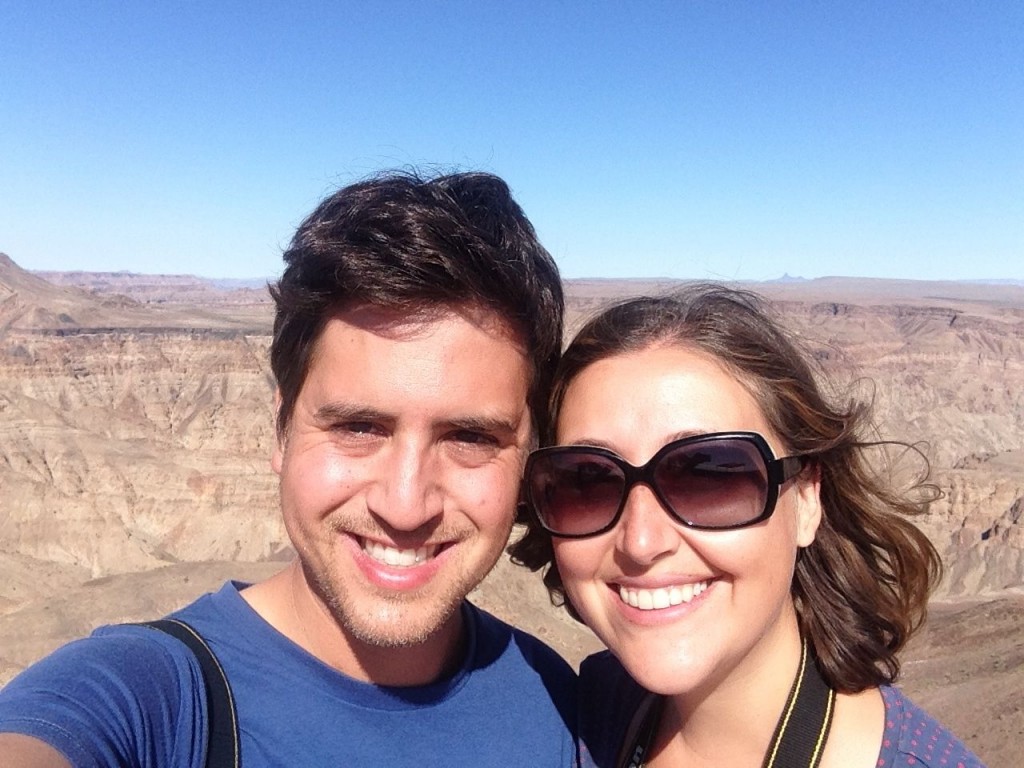
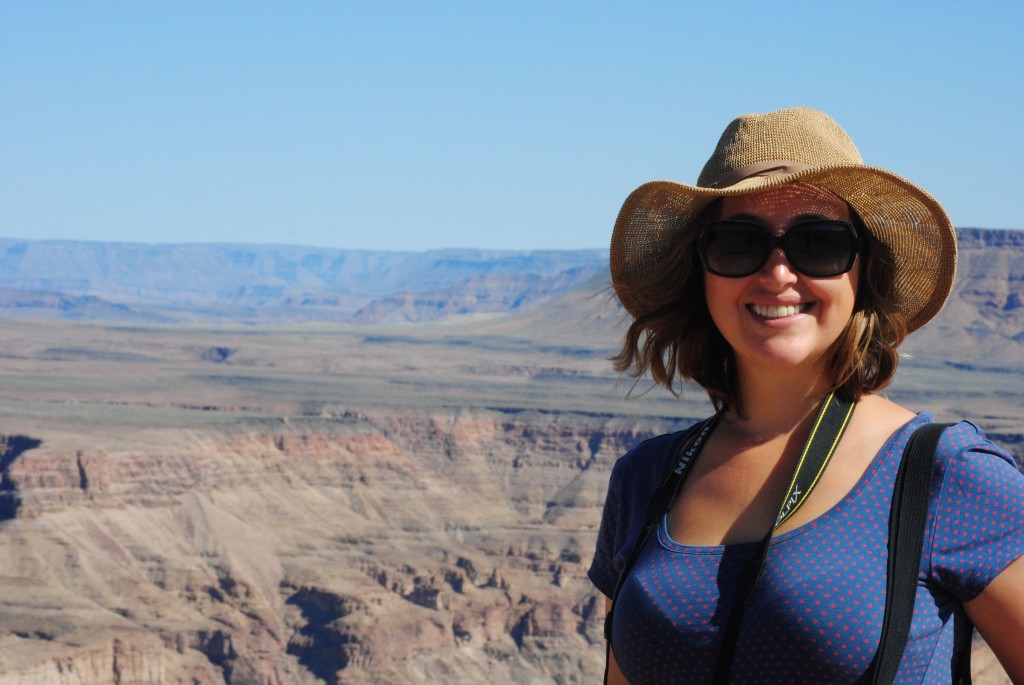
We maintained a leisurely pace, stopping frequently to take pictures, look at the wildlife (mostly birds and a snake), and just sit and marvel at the canyon.
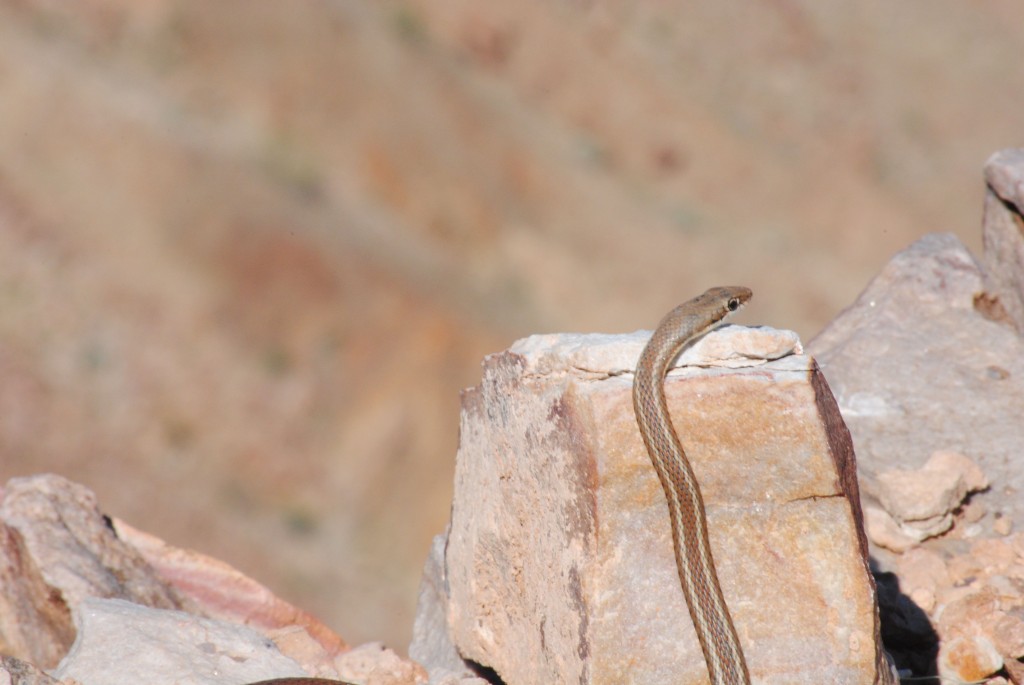
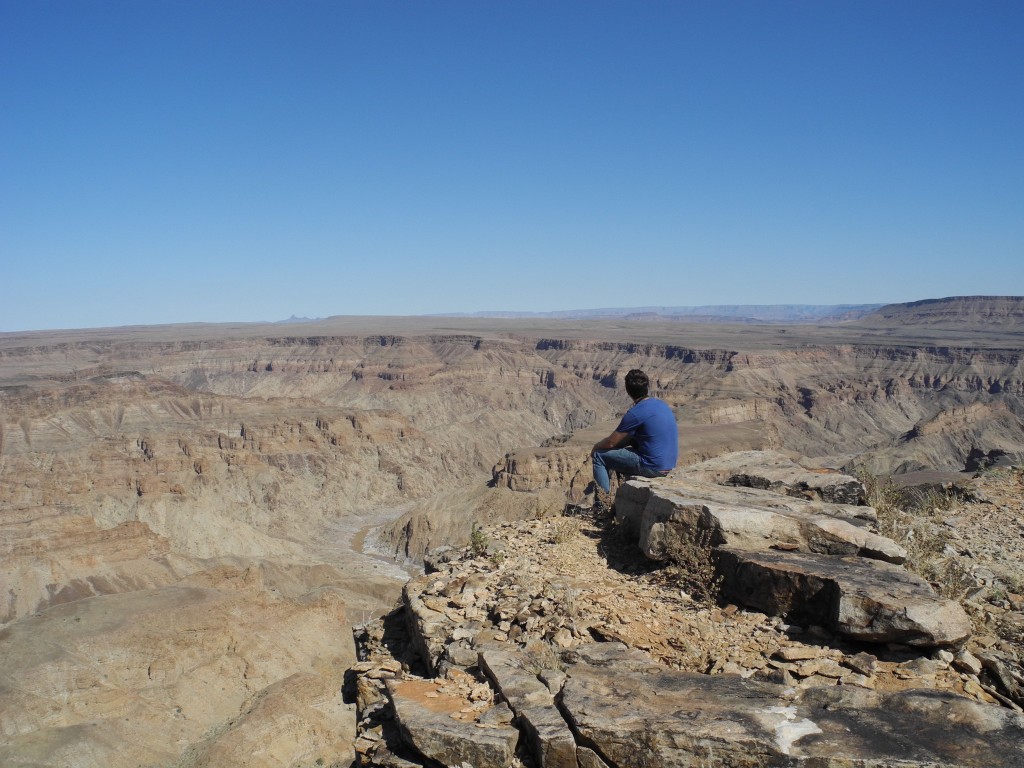
Once our group reconvened at the canyon’s main viewpoint, we had our lunch on the picnic tables there. The amazing view made our shredded cheese and mystery lunchmeat sandwiches much more palatable.
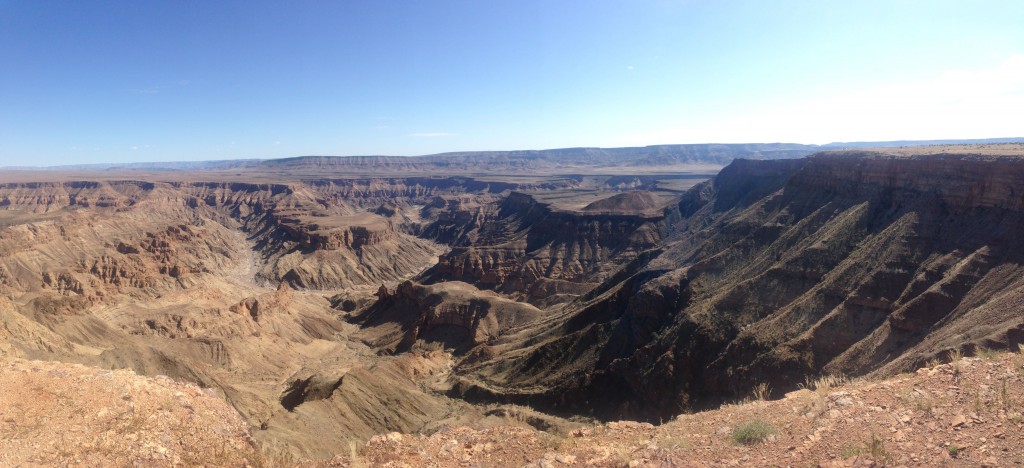
After we left the Fish River Canyon, we headed to the small town of Aus, where we would be camping for the night.2 We set up camp at Klein-Aus Vista, where the campsite, surrounded by mountains, had an arguably even more stunning setting than our campsite at Ai-Ais. Because the campsite was isolated (it was even 2 km from the lodge), there was hardly any light pollution and we had an amazing view of the stars.
Where We Stayed:
☆ Klein-Aus Vista Campsite. Four goats. The scenery was amazing, and the shared shower facilities were nice (albeit a little far down a dark path, making finding the bathroom in the middle of the night a bit of an adventure).
1 Our guide told us the story of a man who, despite the numerous signs prohibiting day hiking, ventured down into the canyon and was never seen again.
2 Fun fact we learned from the German girls in our group: In German, “aus” is what you say to a dog to get it to stop barking.
The second day of our trip through Southern Namibia began early: we arose at 6:30 a.m. to pack up our tents, have breakfast around the remnants of the campfire, and get back on the road.
Just before noon, we arrived at the Mesosaurus Camp. The site is run by a farmer who discovered mesosaurus (a lizard-like creature that lived approximately 270 million years ago) fossils on his property. The farmer, who was a bit of a ham and clearly enjoyed having tourists, took us on a tour of part of his property, first to show us the fossils and then to tell us about the local terrain.
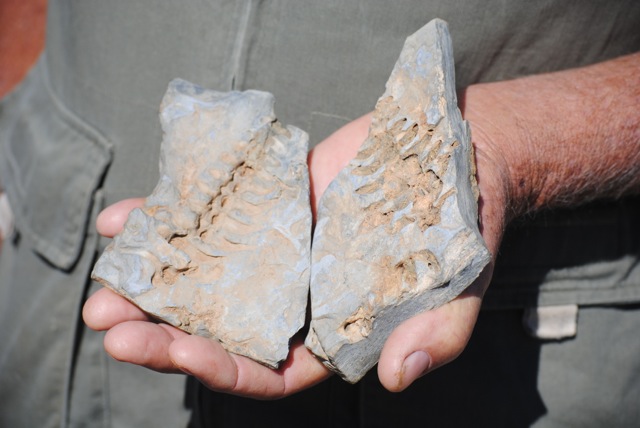
The first leg of our our 23-day camping trip was a 7-day circuit through Southern Namibia. After meeting our guides and the rest of our group in Windhoek, we set off into the Kalahari Desert.
Since we had arrived in Namibia via overnight bus, this was the first chance we had to see the Namibian countryside. During our brief stops at the sign demarcating the Tropic of Capricorn and for lunch, we admired the wide-open spaces and the desert life.
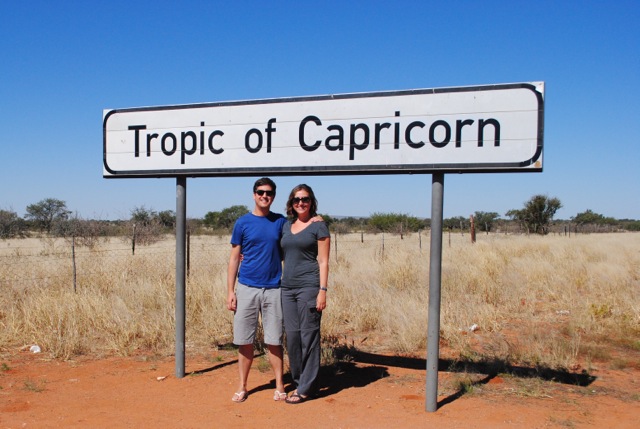
After spending a month driving ourselves around South Africa, Swaziland, and Lesotho, we decided to hand the trip-planning reins over to Wild Dog Safaris and booked ourselves on their 23-day “African Odyssey” camping trip. The trip was essentially comprised of three smaller trips: (i) a 7-day circuit through Southern Namibia, (ii) a 7-day loop through Northern Namibia, and (iii) a 9-day journey through Namibia’s Caprivi Strip and Botswana, ending at the Zambian side of Victoria Falls in Livingstone. Our trip began in Windhoek, and also returned to Windhoek for one night after each of our weeks in Southern and Northern Namibia.
To reach Windhoek, we took an Intercape bus from Cape Town. The journey, which began at 10:00 a.m. on a Tuesday morning, was projected to take 18 hours. In fact, due to road construction and the general shenanigans associated with international border crossings, the bus took more than 24 hours to reach Windhoek.
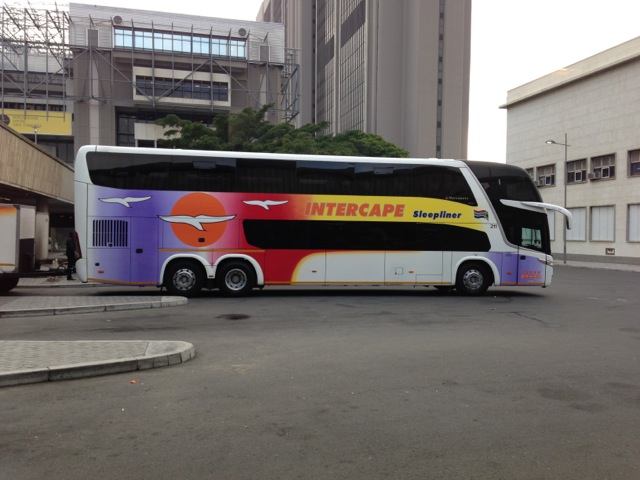
Continue reading That Time We Took a 24-Hour Bus Ride to Windhoek
Some of the top attractions in the Cape Town area – Kirstenbosch Botanical Gardens, Cape Point, and Boulders Bay – are not easily accessible by public transportation. In order to reach them, one must generally take a tour, hire a taxi, or rent a car. Having already familiarized ourselves with the rules of the South African road, we opted to rent a car for the day, which provided us maximum flexibility and minimum cost.
Our first stop was the Kirstenbosch Botantical Gardens. Our guidebook proclaimed the gardens to be “among the most beautiful in the world.” It’s not hard to believe that to be true: the gardens are set among lush green lawns against the dramatic backdrop of Table Mountain. Approximately 9,000 of Southern Africa’s plant species are found there, ranging from the distinctive blossoms of the protea, South Africa’s national flower, to the welwitschia, a two-leaved plant endemic to only the northern Namib Desert that can live for up to 2,000 years, and including gardens dedicated to useful, medicinal, and edible plants.
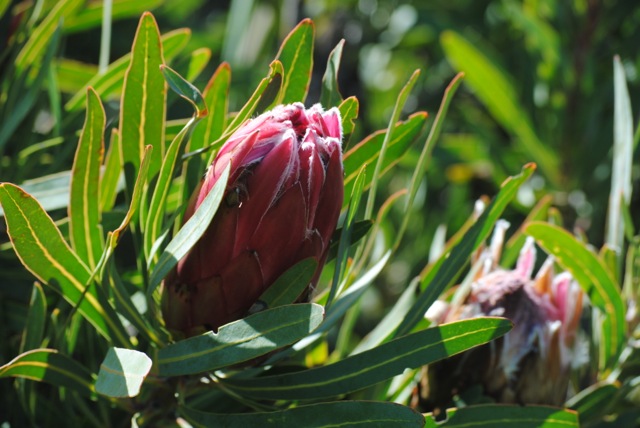
Climbing Table Mountain is one of the most iconic things to do in Cape Town, and it was high on our list of must-dos.1 Our visit to Cape Town was punctuated by occasional drizzling rain and fog, and, because climbing the mountain is a multi-hour outdoor endeavor, we put off our climb until the forecast showed little chance of precipitation.

Ever since we announced our plans to travel in Africa, people have been singing Cape Town’s praises. Nearly every person we met along the way – including South Africans from other parts of the country – effused over Cape Town, promising us that we were going to love it. We had heard so much about Cape Town, in fact, that I worried the city wasn’t going to be able to live up to its reputation.
Happily, I was wrong.
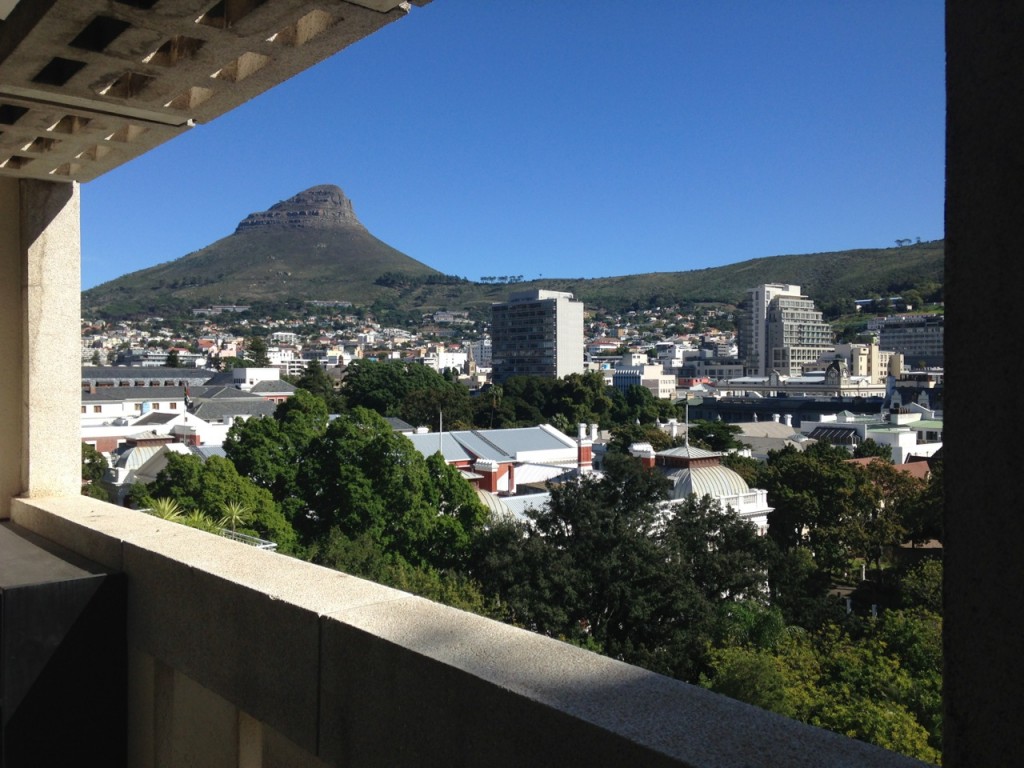
After having logged 5,192.7 kilometers across three countries, it was a bittersweet moment when we dropped off our Toyota Corolla at the Avis location in downtown Cape Town – it left like a lifetime ago when we first picked it up at the railway station in Johannesburg. To a certain extent, the car had become our one constant over the course of the past thirty days, and it was strange to suddenly be without it. We quickly adjusted, however, and returned to our roots of urban exploring on foot, which is honestly the best way to experience nearly any city. Continue reading Tourism-Lite in Cape Town
After we left the berry farm in Swellendam, we moved to a vineyard in Stellenbosch. (I know, we were really roughing it in South Africa.)
Our drive along the Garden Route and through the Western Cape had been a constant stream of activity (there were beaches to explore and ostriches to ride!), and we were looking forward to a few leisurely days in Stellenbosch in the Cape Winelands. We splurged for three nights at a hotel located on a vineyard – in a room with a view overlooking the surrounding hills, no less.1
